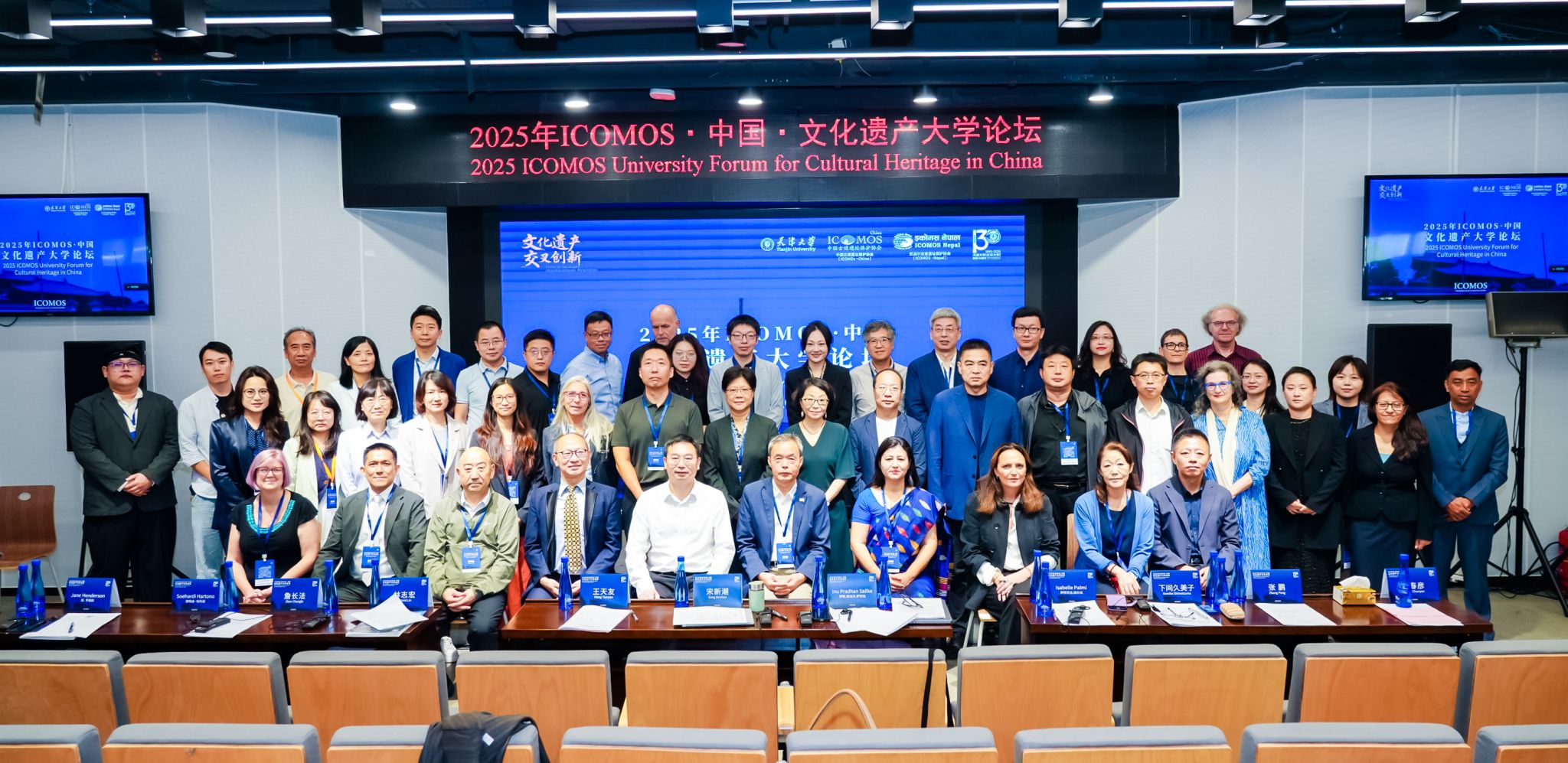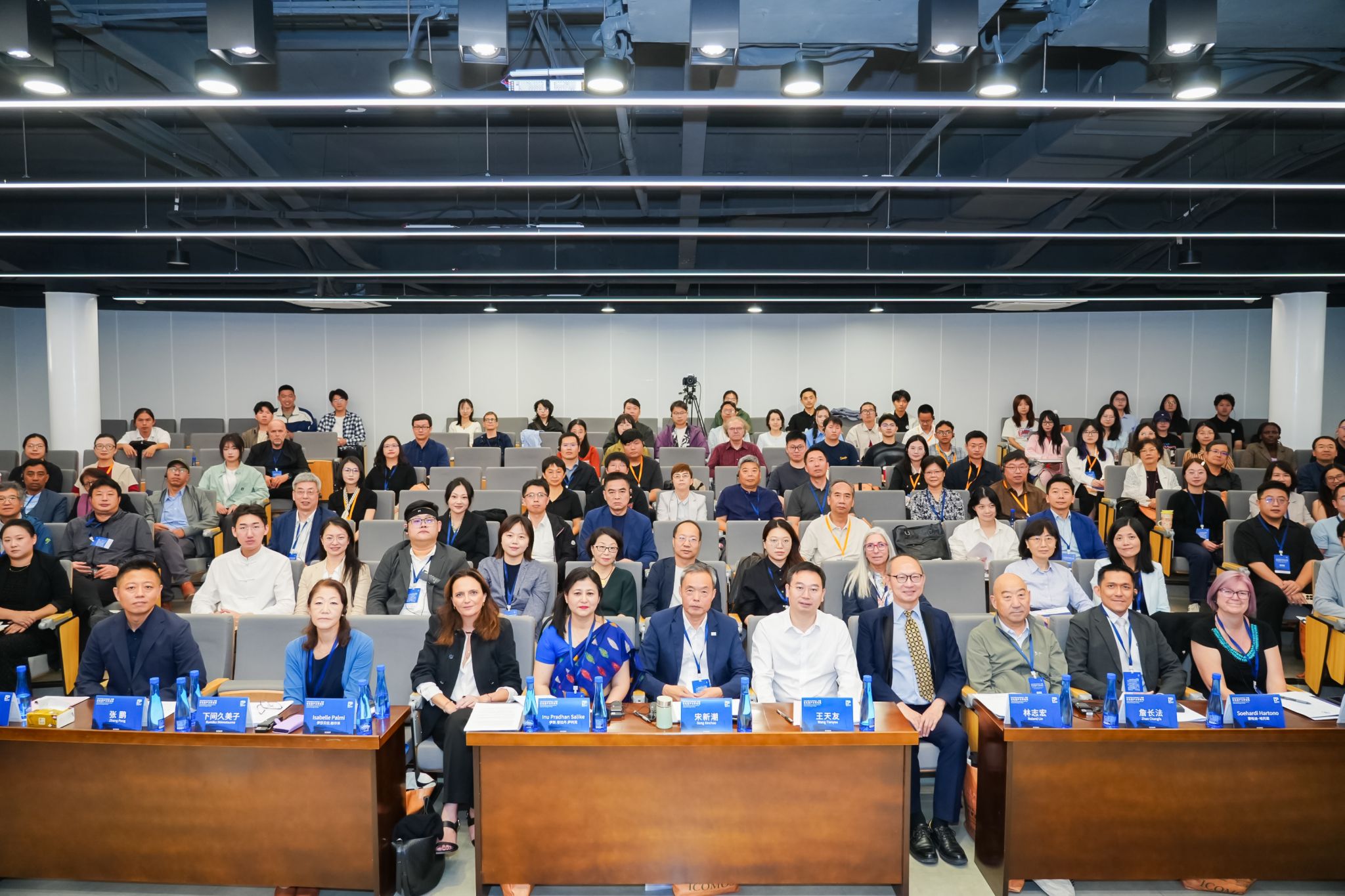Global Scholars Gather to Discuss Cultural Heritage at 2025 ICOMOS University Forum for Cultural Heritage in China
From September 20-21, the 2025 ICOMOS University Forum for Cultural Heritage in China, themed “Cultural Heritage · Interdisciplinary Innovation”, was held at the Weijin Road Campus of Tianjin University. The Forum highlighted the critical need for preparedness, risk mitigation, and resilience — areas where academic research and innovation must provide guidance and solutions.

Organized jointly by Tianjin University’s School of Architecture, the International Council on Monuments and Sites (ICOMOS) China, and ICOMOS Nepal, the two-day event attracted over 100 participants from 10 countries, including experts, scholars, and institutional representatives. Together, they explored the future of cultural heritage through innovative policies, technologies, and educational frameworks. The opening ceremony of the event was presided over by Professor Zhang Chunyan, Party Secretary of the School of Architecture at Tianjin University.
Wang Tianyou, Vice President of Tianjin University, delivered the opening remarks, warmly welcoming all distinguished guests and highlighting the university's commitment to promoting interdisciplinary integration and supporting heritage preservation.
Leonardo Castriota, Vice President of the International Council on Monuments and Sites (ICOMOS), in his opening address, praised the forum's significant role in fostering global collaboration and knowledge sharing in the field of cultural heritage.
Inu Pradhan Salike, Vice President of the ICOMOS Nepal, expressed hopes for deepening regional cooperation and jointly tackling the challenges of heritage conservation.
Finally, Song Xinchao, President of ICOMOS China, reviewed the association's efforts in advancing international dialogue and cultivating professional talent in heritage protection. He emphasized that "interdisciplinary innovation" is key to addressing the complexities of heritage in the new era and empowering sustainable development.
Across presentations on the theme forums, attendees discussed policy making and management for cultural heritage conservation, interdisciplinary innovation in heritage research and conservation practice, and reconstruction of the cultural heritage education system from a global perspective. Several themes were also discussed, including community and collaboration, technology as a tool, preventive action, education and capacity building, and inclusive protection.
Isabelle Palmi, Director of ICOMOS France, believed "Heritage pieces should be part of the living, not regarded as idols."
Soehardi Hartono, President of ICOMOS Indonesia, advocated for combining Historic Urban Landscape (HUL) principles with design-led and interdisciplinary approaches.
Zhang Yahong, Deputy Director of Beijing Parks Management Center, demonstrated how technology is transforming conservation: from monitoring data to predict erosion, to LiDAR and BIM modeling for digital archiving, and 5G+ for public engagement.

Lyndah Katusiime from Uganda, a first-year Master’s student at the School of Architecture of Tianjin University and UNESCO fellow, said: “China has made impressive strides in technology and policy. The insights I gained—from interdisciplinary collaboration to tech-driven solutions—have not only boosted my confidence but also clarified my role as a future practitioner. I now see my studies as a bridge: the techniques I learn at Tianjin University can be adapted to address global needs. The conference reminded me that landscape architecture is not just about design, it's about safeguarding stories, ecosystems, and identities for future generations. I leave this event inspired to apply global best practices locally, knowing that my work can make a meaningful difference.”
By Sun Xiaofang

